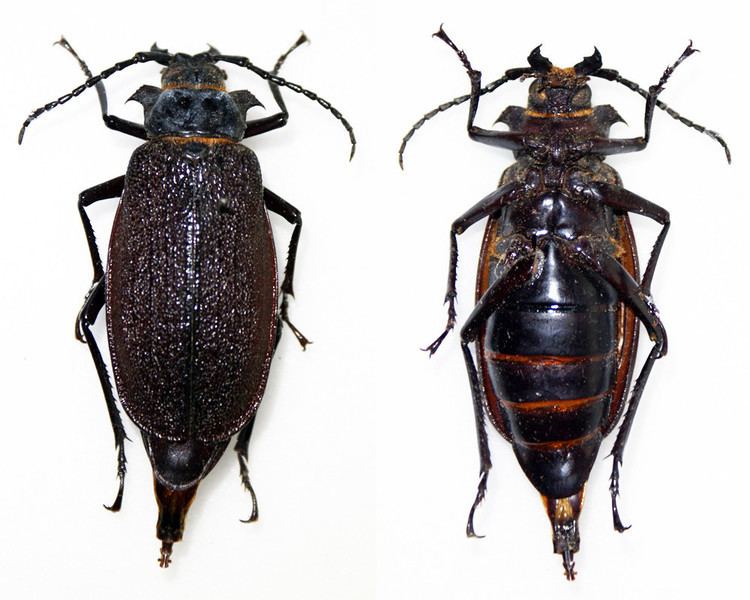Family Cerambycidae | Genus Acanthinodera Rank Species | |
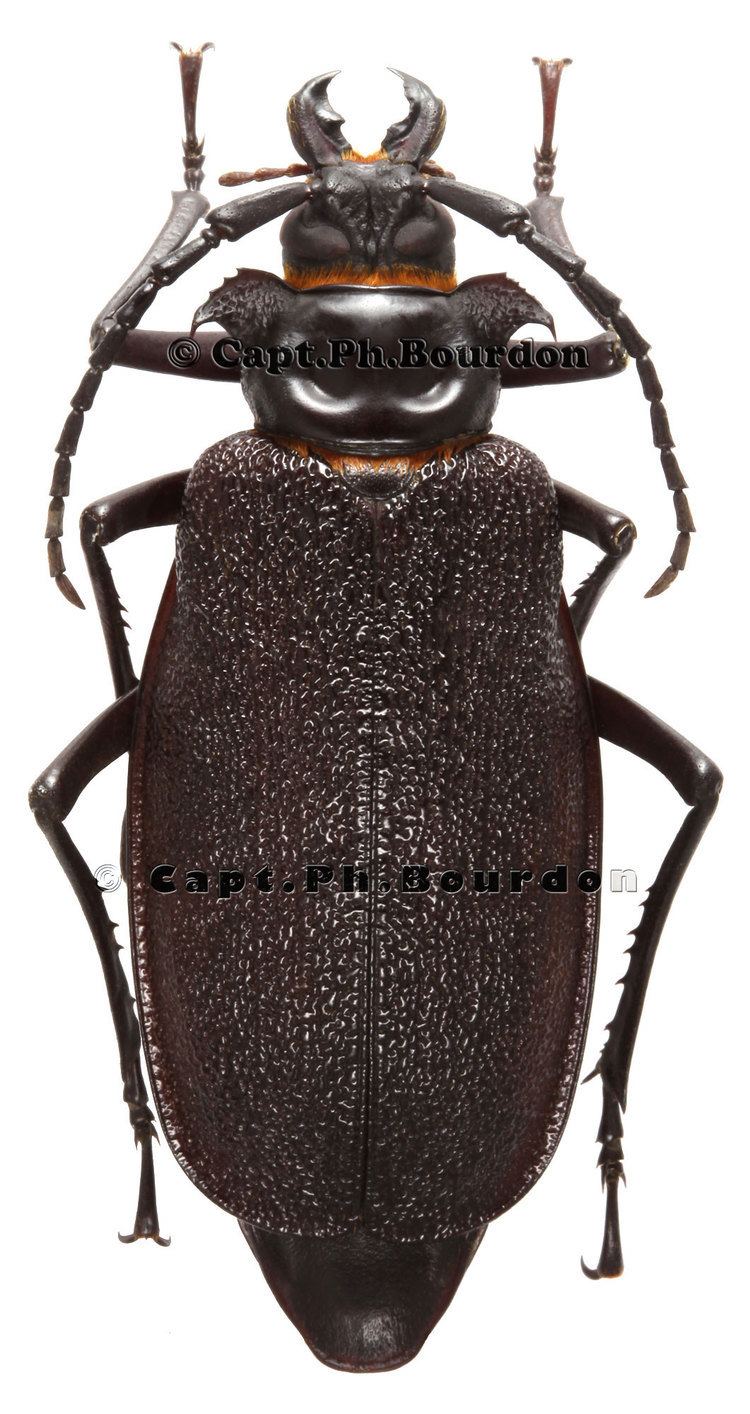 | ||
Similar Calocomus, Braderochus, Ctenoscelis, Apterocaulus, Cantharocnemis | ||
Acanthinodera cumingii (Spanish: Madre de la Culebra, literally "mother of the snake") is a longhorned beetle in the family Cerambycidae and subfamily Prioninae. It is the only species in the genus Acanthinodera, and is one of the largest species of beetle in Chile. The beetle is endemic to central Chile and can be found from IV Coquimbo Region to IX La Araucanía Region.
Contents
- Madre de la culebra acanthinodera cumingii parque nacional la campana
- Range
- Conservation
- Description
- Life cycle
- Synonyms
- References
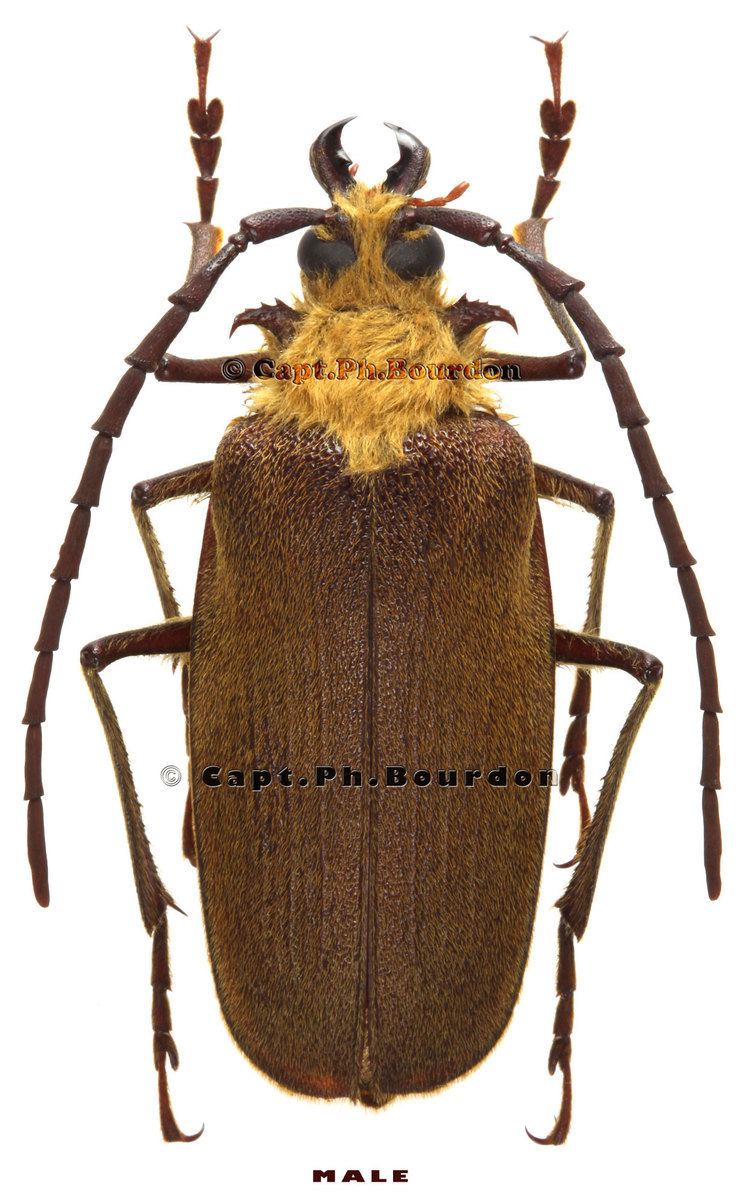
Madre de la culebra acanthinodera cumingii parque nacional la campana
Range
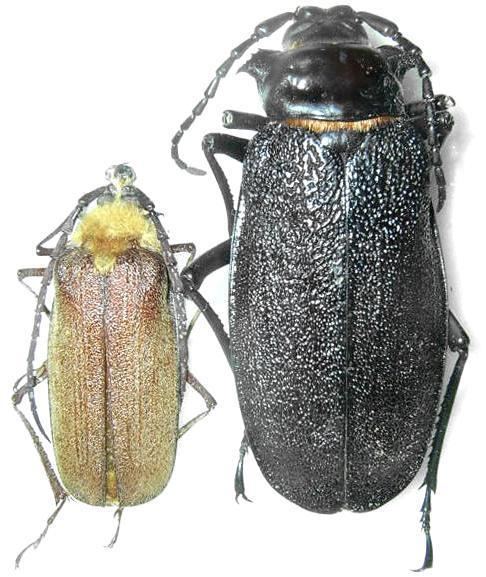
The species is endemic to Chile, and can be found from the south of the Region of Coquimbo to the Malleco Province in the Region of Araucanía. It can be found from sea level to the Precordillera hills.
Conservation
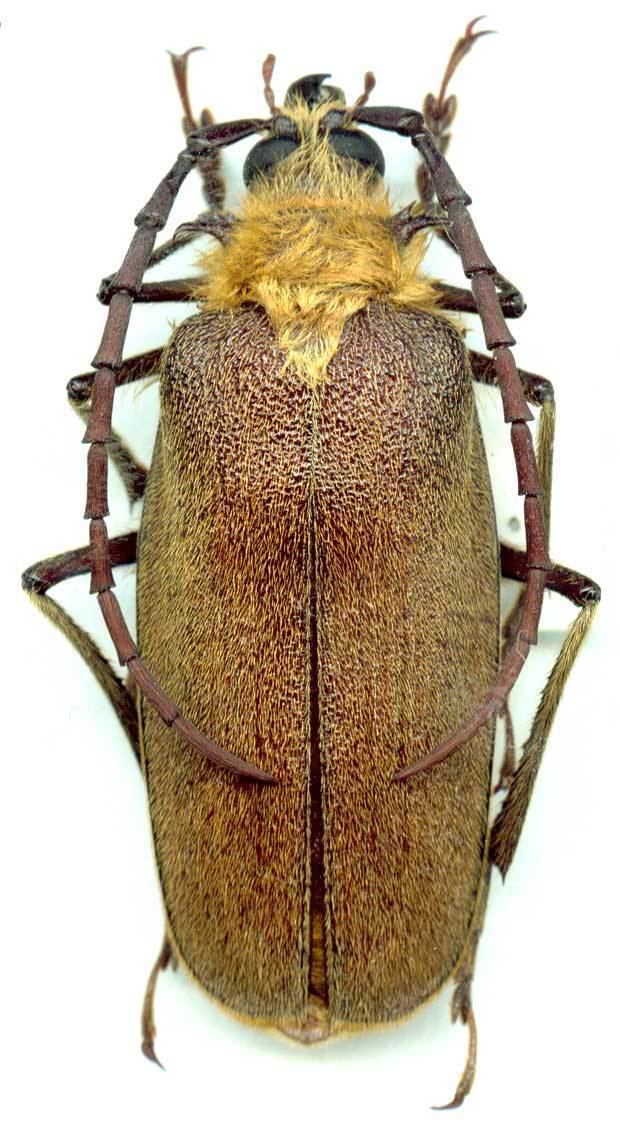
In its native habitat in Chile the insect is vulnerable to habitat destruction from logging and construction. Due to its large size, the beetle is also vulnerable to being caught and killed by people, exacerbating the danger of extinction.
Description

The species has a particularly marked sexual dimorphism, which originally led naturalists to classify the male and female as distinct species. The male measures 5 to 6 cm, is light brown and clearly differs from the female. The female is black and measures between 8 and 9 cm on averages, although specimens exceeding 12 cm in length have also been found. The male is nocturnal and can fly, while the female is diurnal and does not fly.
Life cycle
The life cycle of A. cumingii has been little studied. The females lay more than 100 white eggs resembling grains of rice in the dry trunks of trees and in decomposing vegetation. The length of time between eggs and adulthood can take six years, depending on humidity and food availability. Larva can reach sizes as large as 13 cm in length. For this reason the common name of the insect is "the mother of the snake" in Spanish.
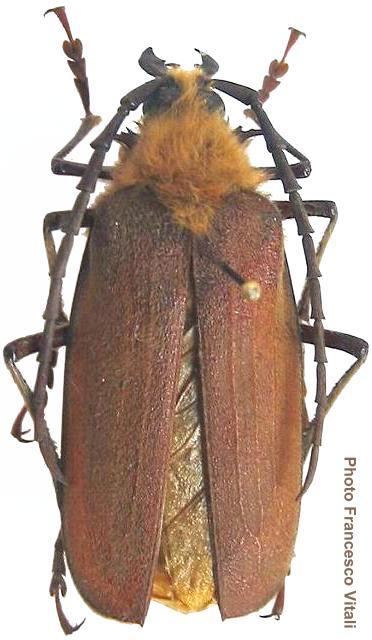
The insect plays an important ecosystem role in decomposition of dead wood. The larval stage has been found living in approximately 30 species of trees, both indigenous and invasive. This includes Eucalyptus which is an invasive tree in Chile.

The insects are occasionally preyed upon by mammalian carnivores, such as foxes. However, the strong jaws of the insect, used for eating wood, may provide a defense.
Synonyms
